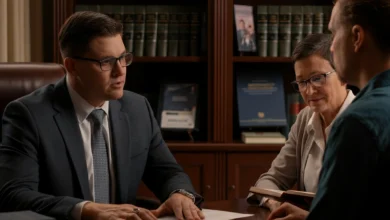The Caibo Simon Beethzart separation: Unraveling the Legacy of a Fractured Artistic Alliance

The caibo simon beethzart separation, once celebrated as a revolutionary force in modern experimental art and music, met an abrupt and controversial end in 2022. Their separation sent shockwaves through creative communities, leaving audiences and critics alike questioning the sustainability of collaborative genius. This article delves into the origins of their partnership, the factors that led to their dissolution, and the lasting impact of their work. By exploring their journey through the lens of artistic philosophy, creative clashes, and public perception, we aim to understand how such a groundbreaking alliance crumbled—and what it teaches us about collaboration in the arts.
The Origins of the Caibo-Simon-Beethzart Alliance
The trio—comprising avant-garde composer Lena Caibo, multimedia sculptor Marcus Simon, and electronic music prodigy Johan Beethzart—emerged in the late 2010s as a defiant response to the commercialization of art. Their work blended Caibo’s dissonant orchestral arrangements, Simon’s kinetic installations, and Beethzart’s glitch-heavy soundscapes. Early projects like Symphony of Fractured Light (2018) and Echoes in Static (2019) redefined immersive art, earning acclaim for their daring fusion of mediums. Critics praised their ability to “make silence audible” and “sculpt time itself.”
Their alliance was rooted in a shared disdain for artistic compromise. Caibo famously stated, “We create for the chaos, not the crowd,” a mantra that became their rallying cry. However, this very idealism sowed seeds of discord. As their fame grew, external pressures—from gallery owners, record labels, and even their own fanbase—began to test their unity.
Creative Philosophy: Clash of Visions
At the heart of the separation lay irreconcilable differences in artistic philosophy. Caibo viewed their work as a “living entity” that demanded constant evolution, even at the expense of coherence. Simon, meanwhile, insisted on meticulous planning, arguing that spontaneity undermined the structural integrity of his installations. Beethzart straddled both worlds, advocating for a balance between chaos and control—a stance that increasingly alienated him from his collaborators.
These tensions crystallized during their final project, Requiem for a Digital Age (2021). Caibo pushed for a fully improvised live performance, while Simon demanded a pre-programmed sequence of visual triggers. Beethzart’s attempts to mediate failed, leading to a publicly disastrous premiere in Berlin. Audience members described the event as “a war between art forms,” with disjointed visuals and erratic soundscapes overshadowing the intended narrative of technological decay.
External Pressures and the Role of Commercialization
The trio’s rejection of commercialism became increasingly untenable as their projects grew in scale. Sponsorship deals, though initially resisted, became necessary to fund large installations like Nebula X (2020), a $2 million holographic exhibit. Simon openly criticized these compromises, calling corporate backers “vultures feeding on the corpse of creativity.” Caibo, however, saw funding as a pragmatic tool, stating, “Even rebels need bullets.”
This ideological rift widened when Beethzart quietly signed a solo deal with a tech conglomerate to develop AI-generated music—a move Caibo labeled “a betrayal of human artistry.” The ensuing fallout played out in viral social media exchanges, with fans polarizing into #TeamChaos (Caibo) and #TeamControl (Simon) factions.
The Breaking Point: Infighting and Legal Battles
By early 2022, the trio’s disagreements had escalated into legal territory. Simon filed a lawsuit to retain ownership of his installations, arguing that their collaborative works diluted his creative rights. Caibo countersued, claiming collective ownership of all concepts developed during their partnership. Beethzart, caught in the crossfire, announced his departure via a cryptic video titled Disconnected, which featured a loop of shattered glass and distorted piano notes.
The legal battles revealed deeper personal animosities. Leaked emails showed Caibo accusing Simon of “suffocating the art with your obsession with order,” while Simon retorted that Caibo’s “recklessness” endangered their team’s credibility. The dissolution was finalized in August 2022, with a court-mandated division of assets and a gag order preventing further public commentary.
Legacy of the Separation: Art, Ego, and Collaboration
Despite its acrimonious end, the Caibo-Simon-Beethzart era reshaped contemporary art. Their experiments in multisensory storytelling inspired a wave of hybrid artists, from VR choreographers to algorithmic painters. Universities now dissect their work in courses on collaborative theory, often using their demise as a cautionary tale about balancing vision and pragmatism.
Individually, their post-separation careers have been telling. Caibo returned to composing for small avant-garde theaters, embracing a “less is more” ethos. Simon now creates isolated, AI-free installations in rural studios, while Beethzart’s AI projects dominate tech-art festivals—a bittersweet coda to their shared history.
Conclusion
The caibo simon beethzart separation underscores a timeless truth: collaboration is both a crucible for brilliance and a tinderbox for conflict. Their story is not just about fractured egos but about the existential challenges facing artists in a hyper-commercialized world. While their alliance could not withstand the pressures of fame and diverging ideals, their legacy endures as a testament to what happens when audacious creativity collides with unyielding ambition.
Frequently Asked Questions (FAQs)
1. What was the Caibo-Simon-Beethzart trio best known for?
They pioneered immersive, multisensory art that blended experimental music, kinetic sculptures, and digital glitch aesthetics. Their work challenged traditional boundaries between artistic disciplines.
2. Why did they separate?
Creative differences, clashes over commercialization, and legal disputes over intellectual property led to their dissolution. Personal conflicts and diverging artistic philosophies exacerbated the split.
3. Are any of the members still collaborating?
No. Post-separation, all three have pursued solo careers. Beethzart’s work with AI contrasts sharply with Simon’s analog focus and Caibo’s minimalist compositions.
4. Has there been any talk of a reunion?
Fans occasionally speculate, but legal restrictions and lingering animosity make a reunion unlikely. Beethzart has called it “a closed chapter.”
5. Where can I experience their former collaborative works?
Fragments of their installations are archived in museums like the Berlin Museum of Modern Hybrid Art, though their full-scale projects no longer exist intact.
6. What lessons can artists learn from their story?
Their journey highlights the importance of clear communication, aligned values, and flexibility in collaborations—and the risks of prioritizing ideology over sustainability.





